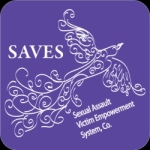Youth Disclosure Protocol
Human trafficking education in secondary school classes should just be about prevention. That, however, will only be the case when we’re able to eradicate the problem of commercial sexual exploitation of children and other forms of trafficking. Until then, incidents of human trafficking are happening in schools and youth organizations everywhere and educators and youth leaders have the opportunity to be a source of early intervention. Like all forms of trauma, the earlier help arrives the better chance that child has to live a productive life.
Protocol for Youth Disclosure
Current statistics tell us that over 100,000 youth are at risk for sexual exploitation each year and the average age of entry into forced prostitution is 13 years old. We want youth to know about these risks to keep themselves and their friends from ever being sexually exploited. We believe bringing anti-human trafficking curriculums into our middle and high school classrooms as well as other youth focused organizations will help us achieve that goal and prevent youth from ever getting involved or becoming victims.
However, even though we hope these curriculums will help prevent youth from ever getting involved, we’re aware that some youth are already being sexually exploited, are involved in human trafficking, and/or are exploiting others. We hope through this learning process, these youth will come forward, disclose their involvement, and get help.
We can also be on the lookout for youth who might need to disclose but not have the courage to take the first step by watching for “triggers” as the material is presented. Words, phrases, images, music, etc. can all be “triggering” incidents for victims. As you go through the curriculum with your class/group, watch for these triggering signs: crying, screaming, running out of the room, fidgeting in the seat, inattentive behavior, and a wide-range of many other responses.
Regardless of how the disclosure happens (voluntarily by a youth or drawn-out by a teacher/counselor/youth leader, etc.), we’ve created the following guideline to help school counselors, teachers, etc. deal with youth who disclose any kind of involvement in the commercial sex trade, sexual exploitation, prostitution, pimping, etc.
1) Protocol – Ask your principal or organization director about current reporting protocol for other issues. Keep in mind, the initial reaction of most people is that human trafficking/slavery and prostitution either does not exist and is a thing of the past, or is an exotic issue that only happens to people in/from other countries.
Remember, children exhibiting signs of grooming or sexual exploitation may be involved in a particular kind of abuse whose remedies are not necessarily found in seemingly overlapping child abuse protocol. Victims of human trafficking that are still in school may be trafficked by peers, so the first contact could be someone that is experienced in dealing with peer on peer crimes. Be sure you’re confident in where a child will go after leaving their disclosure conversation with you.
Some suggestions could be your school social worker; local law enforcement with a direct contact regarding human trafficking; the National Human Trafficking confidential reporting hotline 888-373-7888; or a local service organization that specialize in human trafficking/sexual exploitation.
Even if your colleagues have a more nuanced understanding of the problem, it’s unlikely your school district has had time to institute policies to reflect that wisdom. If a reporting protocol does not exist, one should be created and sent to the educators in your school.
2) Training – Training on the subject is ideal for all school administrators, educators, and youth leaders (even if they do not implement a curriculum in their classroom or organization) since disclosures can occur with anyone. Also, it’s important for key school/youth organization employees to understand the different types of trafficking and sexual exploitation that exist (gang, familial, survival, pimp).
3) State Legislation – Review your state’s laws on human trafficking. There may be a mandated aspect of disclosure that you need to be aware of.
4) Disclosures – It requires a great deal of courage for a youth to disclose. How the child is received and how his or her story is heard is very important. As mentioned above, some of the youth who disclose may have to disclose information about a peer and that may be extremely problematic for them. Before implementing a curriculum, have a school/organization plan of action including: appropriate questions to ask a trafficking victim or youth who is being sexually exploited (your local anti-trafficking organization can help with this), knowing the appropriate reporting and confidentiality structures in place, knowing where the victim should go next, etc.
Confidential Disclosure Resource
 The SAVES reporting system is intended to give a voice to victims in the fight to end sexual violence. The goal of SAVES is to change the world by providing an outlet for victims, one response at a time, one voice at a time, all victims together. While filling out a report – the victim’s name is never requested and therefore will NEVER be disclosed by SAVES.
The SAVES reporting system is intended to give a voice to victims in the fight to end sexual violence. The goal of SAVES is to change the world by providing an outlet for victims, one response at a time, one voice at a time, all victims together. While filling out a report – the victim’s name is never requested and therefore will NEVER be disclosed by SAVES.
SAVESReporting.org is an allegation escrow that holds information for a specific person until a specific condition has been met. This means that, when filing a report, a victim can identify a minimum number of allegations against the same person that, when met, would make them feel comfortable moving forward with the case whether to university officials, military officials or the local police department. This also means that is if the victim never wants to come forward publically, they don’t have to.
To learn more about SavesReporting visit their website.
